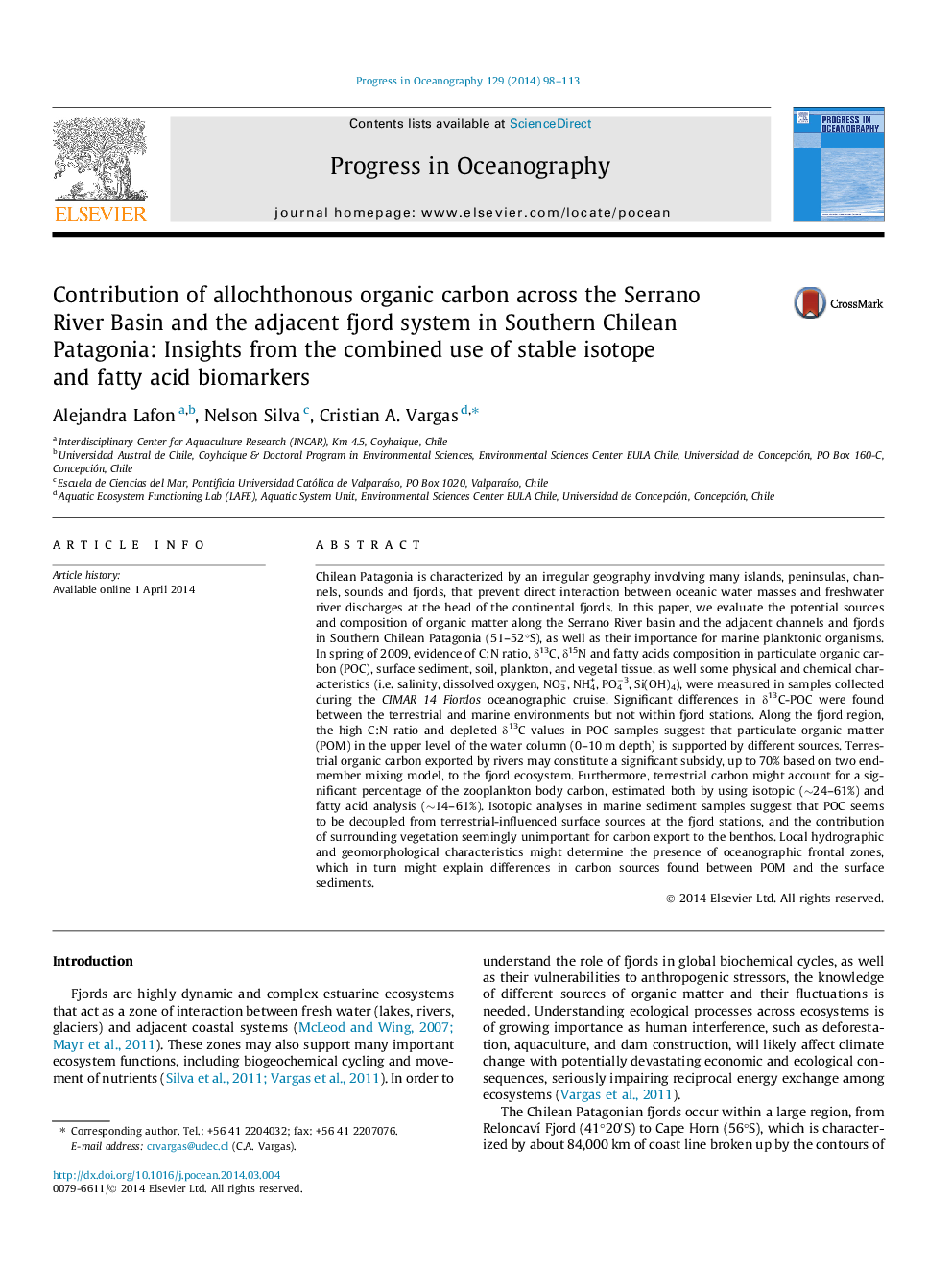| کد مقاله | کد نشریه | سال انتشار | مقاله انگلیسی | نسخه تمام متن |
|---|---|---|---|---|
| 4553067 | 1328864 | 2014 | 16 صفحه PDF | دانلود رایگان |
• Contribution of allochthonous and autochthonous sources to SRB and adjacent fjord system were studied.
• C:N, stables isotopes and fatty acids analysis were used to study carbon sources of POM and sediment.
• Allochthonous derived carbon accounts for about 81–96% of POC in rivers and lakes from SRB.
• Allochthonous derived carbon accounts for 40–96% of POC at the fjord.
• OM in surface sediment along the fjord is derived mainly from marine sources.
Chilean Patagonia is characterized by an irregular geography involving many islands, peninsulas, channels, sounds and fjords, that prevent direct interaction between oceanic water masses and freshwater river discharges at the head of the continental fjords. In this paper, we evaluate the potential sources and composition of organic matter along the Serrano River basin and the adjacent channels and fjords in Southern Chilean Patagonia (51–52°S), as well as their importance for marine planktonic organisms. In spring of 2009, evidence of C:N ratio, δ13C, δ15N and fatty acids composition in particulate organic carbon (POC), surface sediment, soil, plankton, and vegetal tissue, as well some physical and chemical characteristics (i.e. salinity, dissolved oxygen, NO3−, NH4+, PO4−3, Si(OH)4), were measured in samples collected during the CIMAR 14 Fiordos oceanographic cruise. Significant differences in δ13C-POC were found between the terrestrial and marine environments but not within fjord stations. Along the fjord region, the high C:N ratio and depleted δ13C values in POC samples suggest that particulate organic matter (POM) in the upper level of the water column (0–10 m depth) is supported by different sources. Terrestrial organic carbon exported by rivers may constitute a significant subsidy, up to 70% based on two end-member mixing model, to the fjord ecosystem. Furthermore, terrestrial carbon might account for a significant percentage of the zooplankton body carbon, estimated both by using isotopic (∼24–61%) and fatty acid analysis (∼14–61%). Isotopic analyses in marine sediment samples suggest that POC seems to be decoupled from terrestrial-influenced surface sources at the fjord stations, and the contribution of surrounding vegetation seemingly unimportant for carbon export to the benthos. Local hydrographic and geomorphological characteristics might determine the presence of oceanographic frontal zones, which in turn might explain differences in carbon sources found between POM and the surface sediments.
Journal: Progress in Oceanography - Volume 129, Part A, December 2014, Pages 98–113
